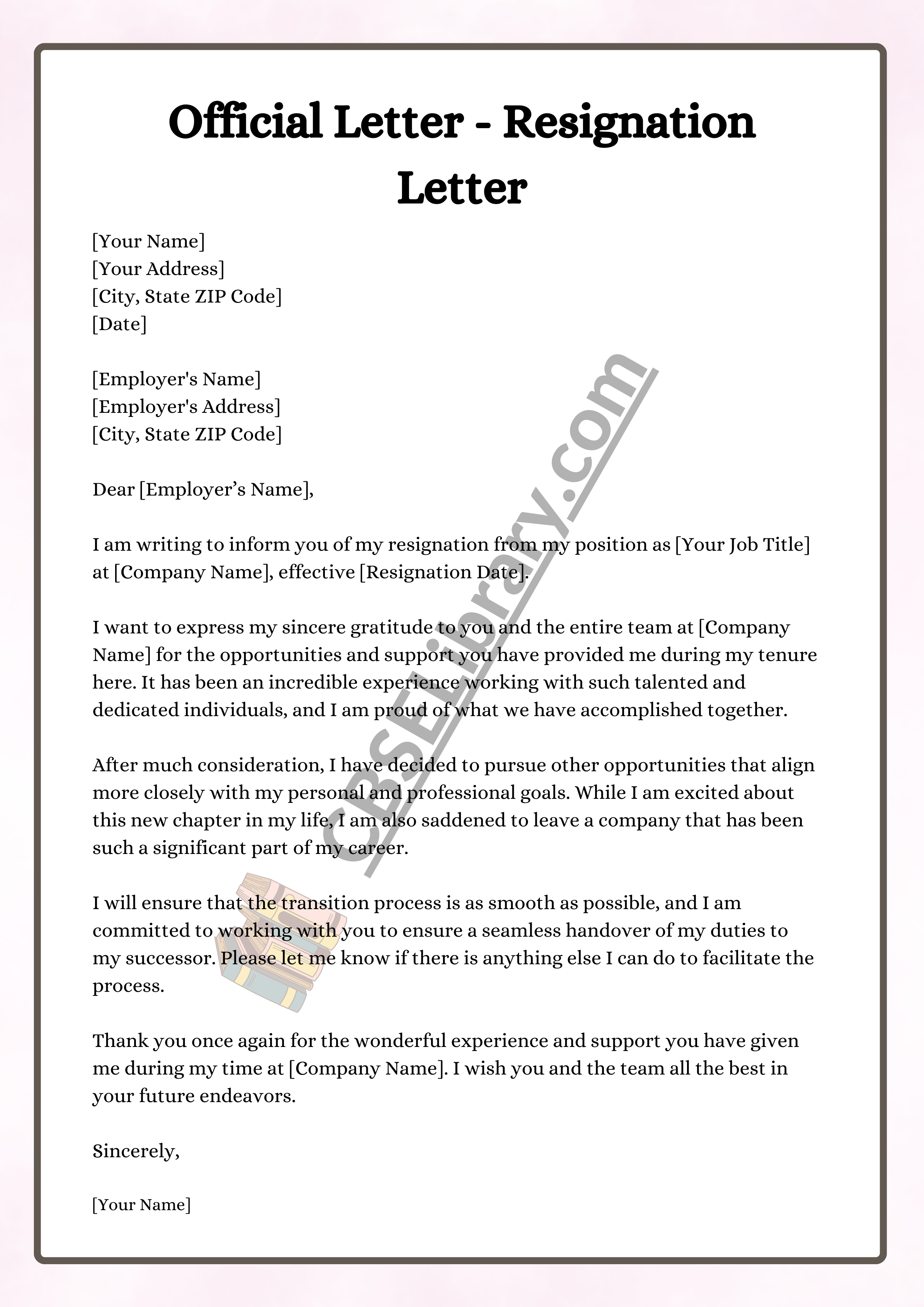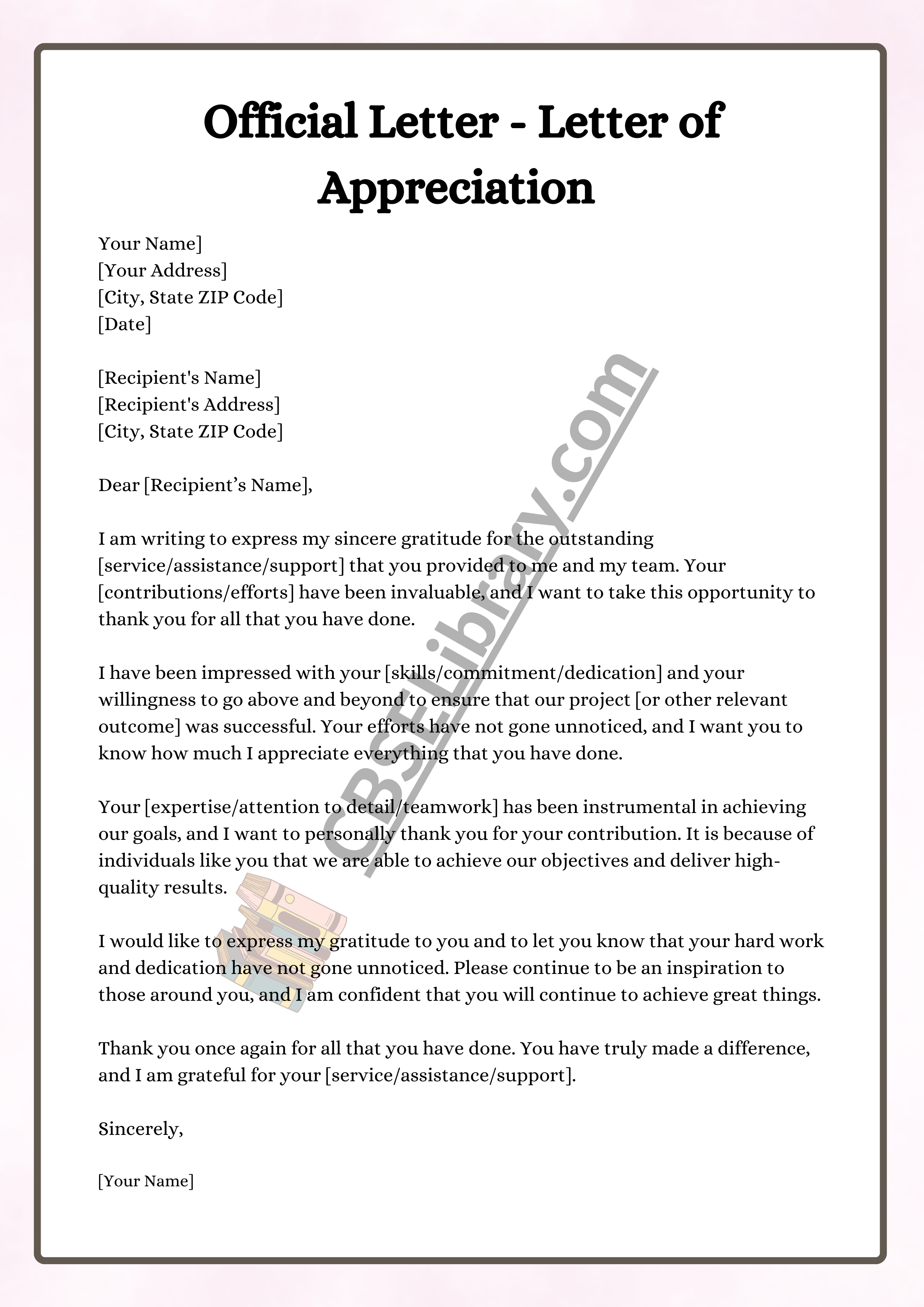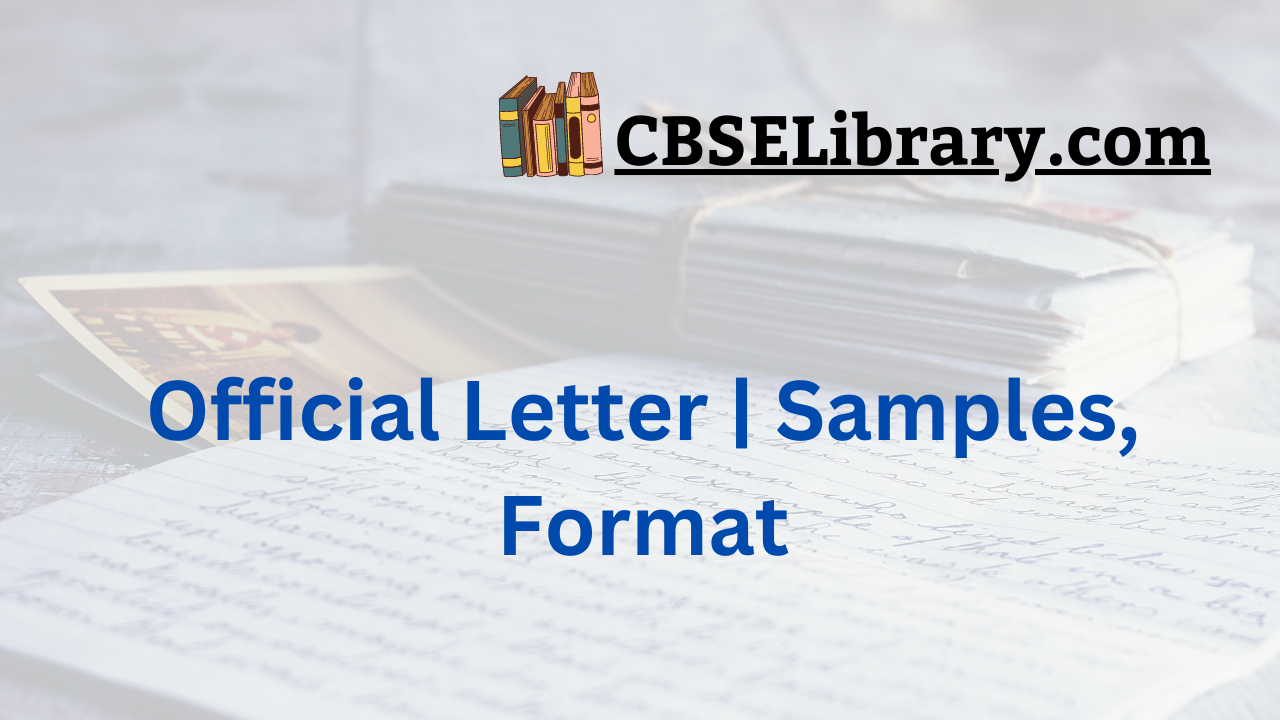Official Letter: An official letter, also called a formal letter, is a document drafted for an organization or an individual in a professional setting. This essentially means such types of letters are used to express interest in a job/ product/ service or are used to convey messages between business entities. Some official letters are also transactional in nature. When communication is to be conveyed among employers and employees, a formal letter is used as well. For instance, appreciation letters, warning letters and appointment letters are examples of official letters used in a professional setting. Official letters can also be used between a customer and an organisation as well.
Regardless, all official letters must follow the formal conventions of drafting a letter – such as adhering to the rules of written English as well as having a formal structure. Furthermore, formal letters are always typed as opposed to being handwritten. And also, official letters serve as legal records of important events or occurrences. Hence, these letters must be drafted with precision and unambiguity in mind. Read on to explore the various formats, detailed guidelines and samples for official letters.
Get Other Types of Letter Writing like Formal, Informal and Different Types of Letter Writing Samples.
Official Letter Guidelines
The basic principle behind sending an official letter is to let the reader understand the contents of the letter through simple and concise sentences. This not only saves time but ensures clarity of the content. Furthermore, a specific structure must be followed throughout the document.
- Set up fonts – Use simple fonts such as Times New Roman or Arial. Flashy or gaudy fonts must be avoided.
- Creating heading – Begin with the sender’s name and address followed by the recipient’s name and address.
- Include salutation – Commonly used salutations include Dear Mr/ Ms (Name). If the recipient is unknown, use Dear Sir/ Madam.
- Use paragraphs – Be precise and unambiguous. Express the matter without using jargons or complicated words.
- Use a concluding paragraph to end the letter – summarize the intention of the letter and let the recipient know what course of action to take or respond.
- Add enclosures if required – these include supporting documents and such. Follow up a closing signature such as “Regards”, “Yours Truly”, “Sincerely” etc.
- Do ensure to thoroughly proofread before sending it in.
Types of Official Letters
The following types of letters are considered as official letters:
- Appreciation Letter
- Resignation Letter
- Warning Letter
- Cover letter
- Complaint letters
- Professional thank you notes
- Letter of interest
- Letter of request
- Letter of recommendation
Official Letter Format
Following is a format typically used in most official letters:
| Sender’s Name Sender’s Designation Organization Name Organization Address Date Recipient’s Name Recipient’s Designation Organization Name Recipient’s Job Title Dear [Recipient’s Name] Subject: Provide a reason for writing a letter Body of the letter Closing Sign Sender’s Name Sender’s Signature (Attachments, if any) |
Official Letter Sample
In a professional setting, the most common type of official letters are resignation letters. An employee will be required to write at least one letter in their professional career. Following is an example for an official letter:
Official Letter Sample 1 – Resignation Letter

Official Letter Sample 2 – Letter of Appreciation

FAQ’s on Official Letter
Question 1.
What is an official letter?
Answer:
An official letter is a document drafted for an organization or an individual in a professional setting.
Question 2.
What are the types of official letters?
Answer:
Official letters are of many types – such as business announcements, cover letters, complaint letters, professional thank you notes, letter of interest, letter of request, letter of recommendation, resignation letters.
Question 3.
How do you write an official letter?
Answer:
An official letter must ensure that the reader understands the contents of the letter easily. It must also follow all formal writing conventions in English.
Question 4.
What must be included in a formal letter?
Answer:
An official letter must include professional fonts such as Times New Roman or Arial. Flashy or gaudy fonts must be avoided. It must also have a heading, where the sender’s name and address must be written. It is followed by the recipient’s name and address. An official letter must also include salutations such as Dear Mr/ Ms (Name). If the recipient is unknown, use Dear Sir/ Madam. Use paragraphs wherever possible. Conclude the letter with a closing signature such as “Regards”, “Sincerely” etc. Add enclosures if required and always proofread the letter before sending it.

